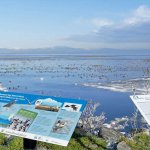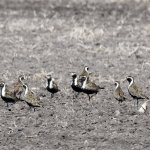In 2016, the Bahía Blanca Estuary in Argentina was designated as a site of Regional Importance in the Western Hemisphere Shorebird Reserve Network (WHSRN). Now the Executive Office of the WHSRN is pleased to announce that an additional 981 hectares have been added to the site.
The Bahía Blanca Estuary is a Site of Regional Importance as it plays host to more than 20,000 shorebirds each year, and more than 1% of the biogeographical populations of the Red Knot (Calidris canutus rufa), White-rumped Sandpiper (C. fuscicollis), Hudsonian Godwit (Limosa haemastica), Two-banded Plover (Charadrius falklandicus) and American Oystercatcher (Haematopus palliatus durnfordi).
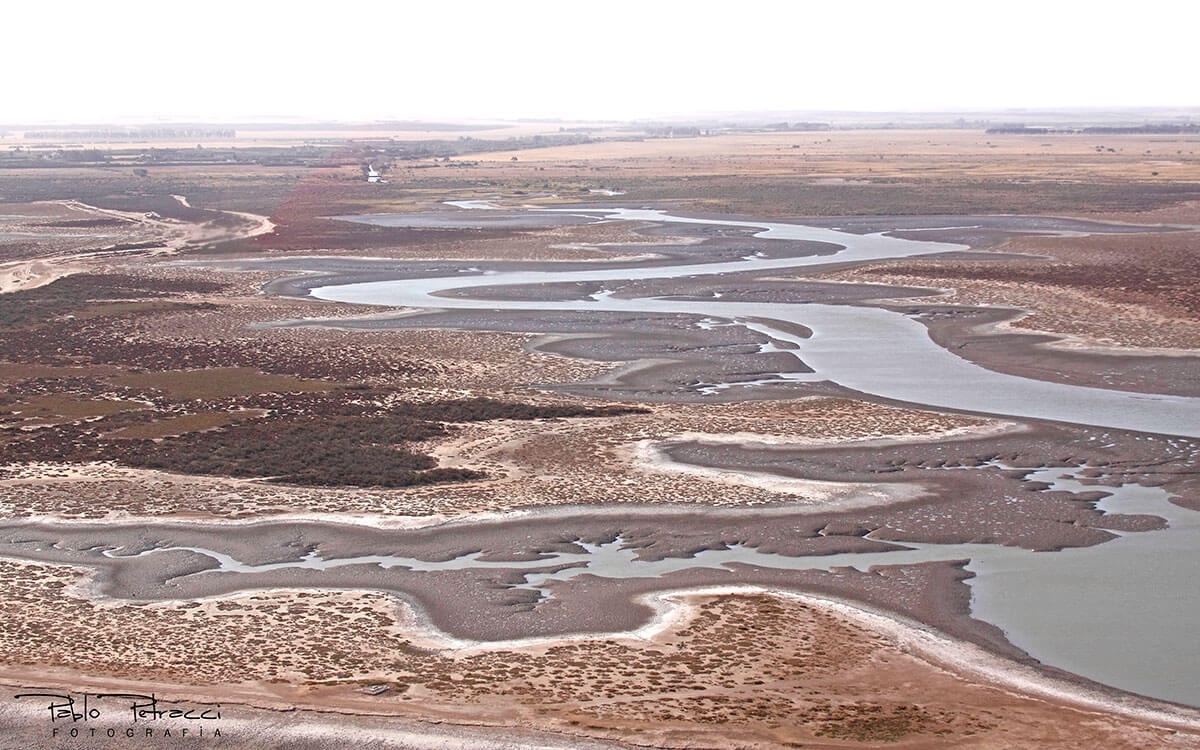
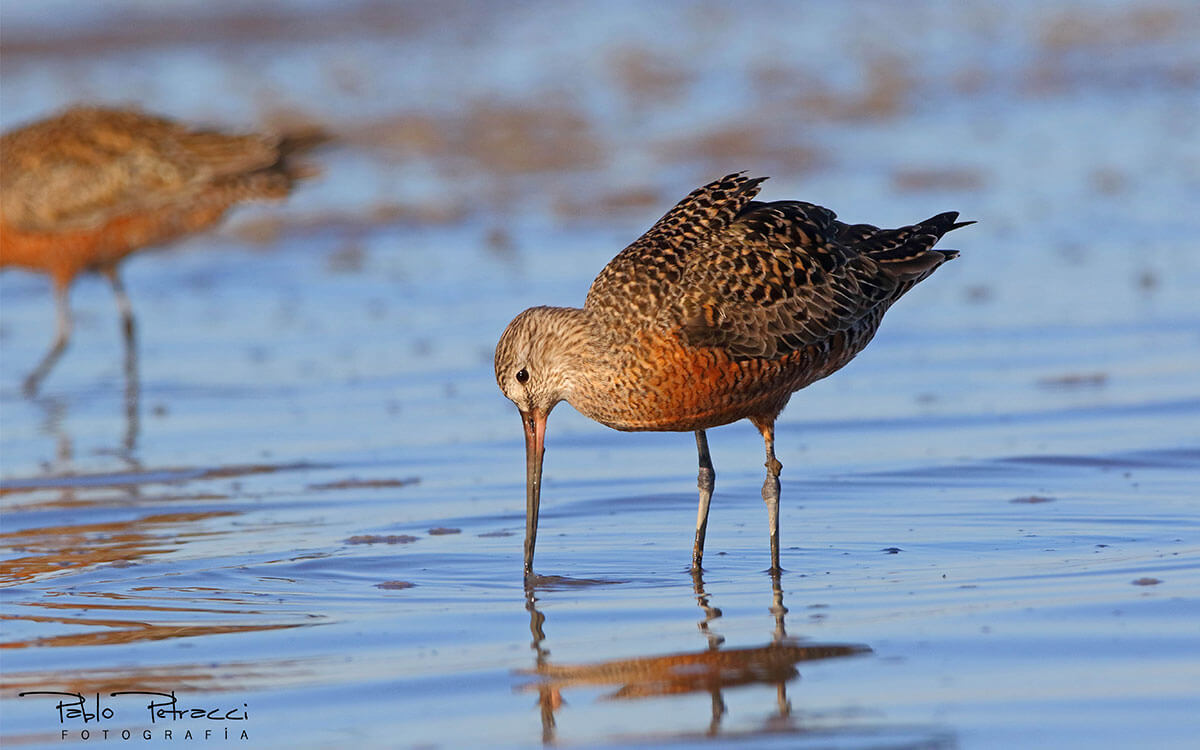
Left: Aerial view fo Bahia Blanca Estuary WHSRN site. Right: Hudsonian Godwit foraging at Bahía Blanca Estuary . Photos: Pablo Petarcci.
For some years now, the Department of Biology, Biochemistry and Pharmacy at the Universidad Nacional del Sur (Departamento de Biología, Bioquímica y Farmacia de la Universidad Nacional del Sur) and the Management Consortium of the Port of Bahia Blanca (Consorcio de Gestión del Puerto de Bahía Blanca (CGPBB)), have been working together with several local organizations towards the inclusion of a further 981 hectares in this WHSRN site. The success of this proposal was confirmed on June 5th, with the approval of the WHSRN Hemispheric Council.
The newly incorporated zone is highly sensitive and represents a sector that is of key ecological importance. It includes the mouth of the principal source of fresh water into the estuary (75% approximately), the river Sauce Chico , which attracts large concentrations of shorebirds and other waterbirds of conservation value.
The Bahía Blanca Estuary now includes seven sub-sites: (1) Bahía Blanca Provincial Nature Reserve (Reserva Natural Provincial Bahía Blanca), Bahía Falsa and Bahía Verde; (2) Islote de la Gaviota Cangrejera Provincial Nature Reserve (Reserva Natural Provincial Islote de la Gaviota Cangrejera), (3) Bahia Blanca Coastal Municipal Nature Reserve (Reserva Natural Municipal Costera de Bahía Blanca), (4) Arroyo Pareja-Isla Cantarelli Natural Area (Área Natural Arroyo Pareja-Isla Cantarelli), (5) Villa del Mar wetlands, (6) Cuatreros Wetland Coastal Reserve (Reserva Costera Humedal Cuatreros) and 7) river Sauce Chico wetlands (Humedales de la Desembocadura del Río Sauce Chico), covering a total of 263,508 hectares (651142 acres).
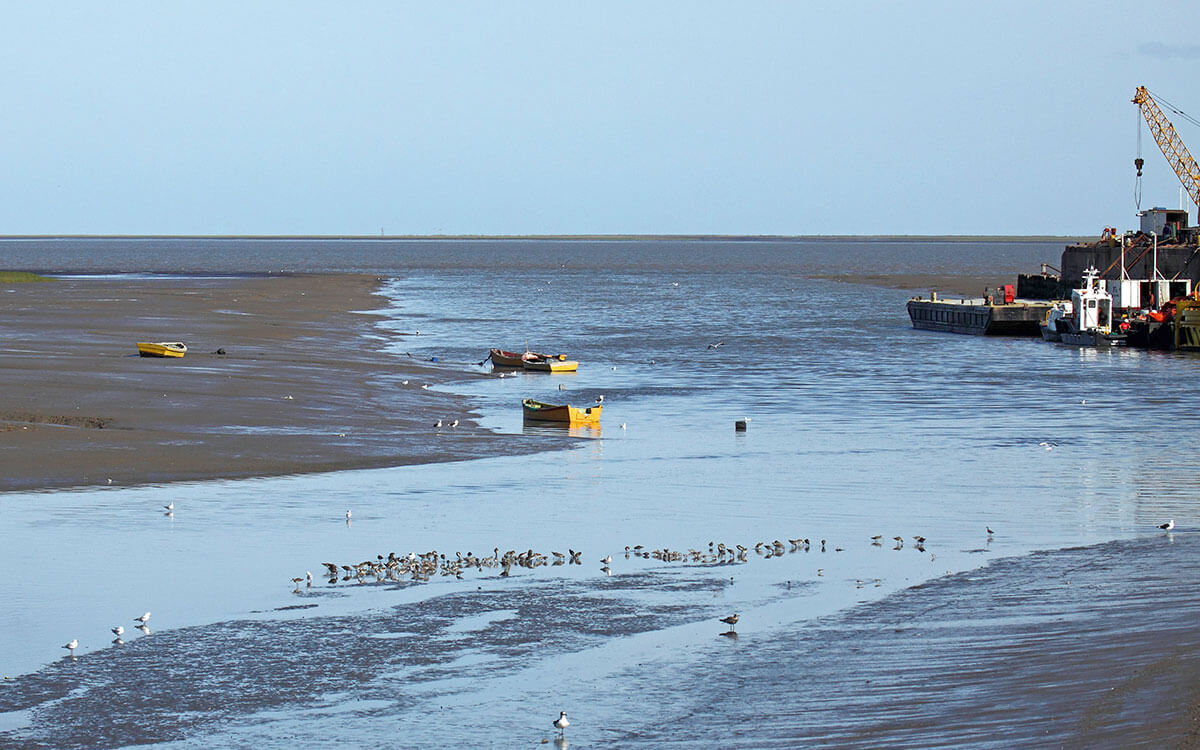
Shorebirds foraging near the port. Photo: Pablo Petarcci
The river Sauce Chico wetlands are under the administration of the Management Consortium of the Port of Bahia Blanca (CGPBB). The inclusion of these wetlands in WHSRN site is the result of a collaborative process between the Consortium and local stakeholders, which has included, amongst other things, creating a collaborative governing space, establishing a Marine Wildlife Rescue Center, conducting ground and aerial censuses, restoring tidal flats, and installing signage in the WHSRN site. With the willingness of CGPBB to include the area under its administration as part of the WHSRN site, the conservation of shorebirds has thus been successfully integrated into the development of one of the largest port complexes in Argentina.
For more information about this site contact Pablo Petracci, Specialist Invistigator at Gekko/ Conservation and Management Study Group of the Department of Biology, Biochemistry and Pharmacy at the Universidad Nacional del Sur (Grupo de Estudios en Conservación y Manejo del Departamento de Biología, Bioquímica y Farmacia de la Universidad Nacional del Sur)
Cover Photo: Hudsonian Godwit roost in Bahía Blanca Estuary. Photo: Pablo Petarcci.





